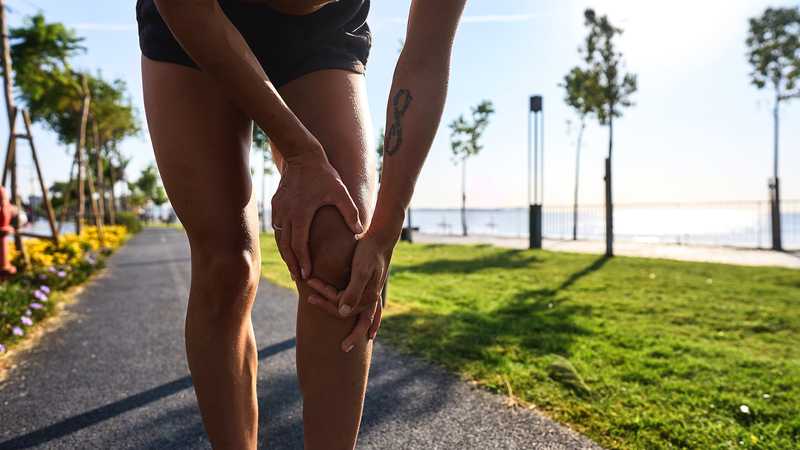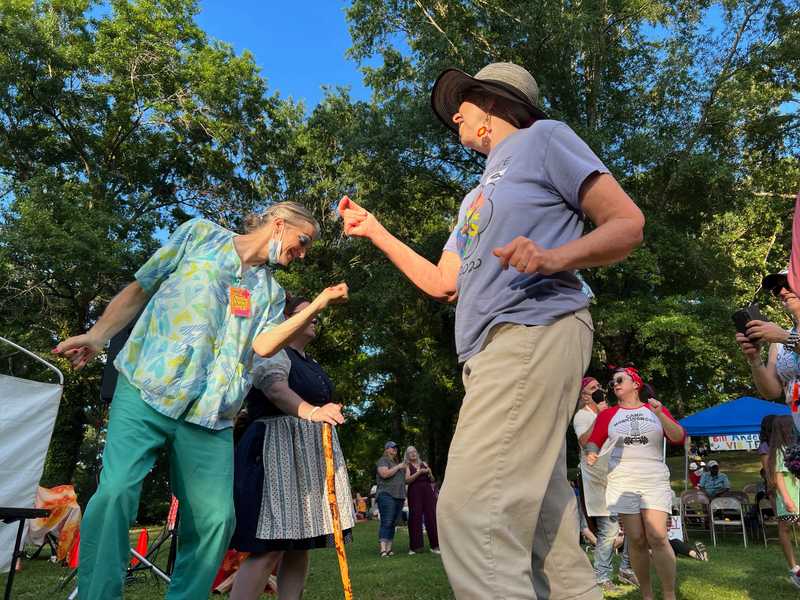Walking regularly can reduce stiffness in your legs and knees and improve arthritis symptoms. But what if you have knee pain when you walk? Even though walking is good for your knees, it can be frustrating when it causes pain.
Let's look closer at 3 key ways to reduce knee pain when walking.
Key Takeaways
- Wearing the proper shoes and warming up before walking can reduce knee pain.
- The recovery process is vital for reducing knee pain, and using the RICE method can speed up your body's healing.
- Floss bands can improve the strength and flexibility of your knee.
Table of Contents
Ways to Reduce Knee Pain When Walking
There are many reasons why you might experience knee pain while walking. For example, you could have osteoarthritis or some injury to your knee.
Osteoarthritis is a degenerative issue that causes your joints to break down over time, resulting in pain, swelling, and trouble doing regular activities.
The most common knee injuries are usually in the menisci or ligaments, such as the ACL or MCL. It's estimated that each year, somewhere between 100,000 and 200,000 people in America tear an ACL.
If you're dealing with a ligament injury or osteoarthritis, it's natural to feel pain when walking. But remember, you can still enjoy walking. Despite the pain, you can find ways to manage it and continue doing what you love. The key is to find the right solutions for your pain.
Consider Better Shoes
Wearing the proper footwear is a must for controlling knee pain and load. You'll want to find shoes that offer stability, support, and even shock absorption.
Walking shoes or running shoes may be your best option. You could consider purchasing HOKA shoes or similar brands that offer cushioning and distribute your weight more evenly.
Note that it's important to be cautious about fashion training shoes. These can increase the impact on your knees when you walk, potentially worsening your pain.
You'll also want to look at the condition of your shoes. Old, worn out shoes don't offer the same support as they might have when you first got them. Once the internal support or side posts begin to wear, it's time to invest in a new pair of shoes.
Consider Ways to Warm Up
To help reduce knee pain when walking, it's crucial to add some heat to your joints and tissues before you walk. This proactive step can help your knee joints improve, making your walking experience more comfortable and less painful.
It's recommended that you spend about ten minutes warming up before you walk. You'll want to start with active movements like squats and dynamic stretching. You can do static stretching, but it's best to save those for the cool-down at the end of your workout.
Warm-up Ideas for Younger Ages
Younger adults should start with dynamic warm-ups. Some good ideas include glute bridges, squats, and step-ups.
Warm-up Ideas for Older 55+ Ages
For adults 55 and older, you should focus on strengthening the knees. Some good ways to warm up the knee include squats with a chair, side leg raises, or quad stretches.
Consider Treadmills
Another way to reduce knee pain when walking is to use a treadmill. When you use a treadmill daily, you have a consistent and flat surface to walk on, unlike when you are outside on a natural trail, where the ground surface can vary and may cause you to easily lose your balance.
It's best to use a treadmill with a slatted belt when you have knee issues, as they have less spring than a regular belt. With less springiness, you get a softer, smoother surface to walk on. These slatted belts have more shock absorbency, which means a lower impact on your legs.
An elliptical is another excellent option to try with lower impact on your knees. An elliptical also gives you a walking experience similar to stair-stepping. Instead of traditional walking, you place your feet on a platform that moves your legs in an oval motion. You can experience a workout that is good for your lower body and legs with less stress to your knee joints.
Recover Properly
Know that a proper recovery is essential to prevent future pain when walking.
You must let your body heal and recover to prevent further injuries. Without adequate rest, you could experience more pain and swelling.
It's also important to actively continue to move within your tolerance. Your body may get weaker if you don't begin to work on mobility and stability. Listen to your body, and don't overdo it, but make sure you are doing some low-impact exercises.
Another great option for recovering from a knee injury is cryotherapy. With cryotherapy, a professional applies cold, often with nitrogen gas or similar substances, to freeze tissues.
You could check out places like Restore Hyper Wellness for a full-body session that may speed up your recovery.
RICE Method
Use could also try using the RICE method for quicker recovery. This technique may help reduce swelling and relieve pain. It is best used within the first 48 hours of injury.
The RICE method stands for:
- Rest: Getting rest is necessary following an acute injury to your knee. Resting gives your body a chance to heal.
- Ice: Adding ice to the injury helps to constrict your blood vessels and numbs your knee, reducing swelling and pain. It’s usually recommended to ice for 15-20 minutes, but not exceeding beyond 20 minutes as this may cause tissue damage. Ice can be applied every 2-3 hours during those acute stages of injury.
- Compression: Wrapping the knee with compression, such as an ACE bandage, applies enough pressure to reduce swelling
- Elevation: Keeping the knee elevated above heart level uses gravity to flow the extra fluid away from the injury, reducing swelling and speeding up the healing process.
However, recent studies have shown that ice is better for more acute severe injuries. With acute milder injuries, using ice may impede blood flow and actually slow down your healing process.
Floss Bands
Floss bands are compression bands that can help improve overall joint mobility. They work by compressing the swelling out of the joints and tissues.
Floss bands have also shown to improve muscle strength. According to a recent study of individuals with runner’s knee, floss band therapy enhances muscle strength by temporarily reducing blood flow to the region allowing for fresh blood and nutrition to lubricate the area upon removal, similar to blood flow restriction therapy. The study found that flossing band therapy had no adverse effects reported in any of their study participants.
A different study found that flossing additionally enhances flexibility in conjunction to muscle force production.
Depending on your age group, floss bands may be a viable option. You can use floss bands at home or with a manual physical therapy practitioner.
Wrapping Up
As you can see, wearing the proper shoes, warming up, using treadmills or lower impact machines, proper recovery, and the potential use of floss bands is key to reducing knee pain while walking.
If you still have trouble with your knee and want help, request an appointment with one of our expert physical therapists to help you get your knee pain under control.
Before you go, please read our disclaimer. This blog is intended for informational purposes only. We are not providing legal or medical advice and this blog does not create a provider-patient relationship. Do not rely on our blog (or any blog) for medical information. Always seek the help of a qualified medical professional who has assessed you and understands your condition.

Dr. Anand completed her Orthopaedic Physical Therapy residency at the Johns Hopkins Medicine and the George Washington University after earning her Doctor of Physical Therapy degree in 2021 from the George Washington University. She practices in the Austin, TX area.

Dr. Anand completed her Orthopaedic Physical Therapy residency at the Johns Hopkins Medicine and the George Washington University after earning her Doctor of Physical Therapy degree in 2021 from the George Washington University. She practices in the Austin, TX area.


